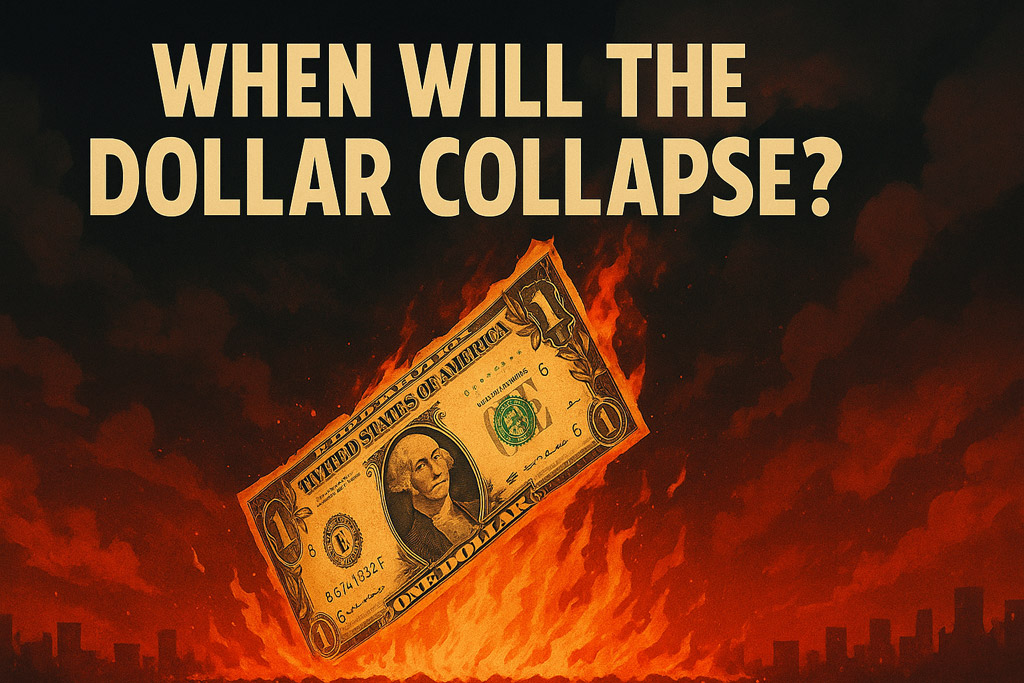 The US dollar reached an all-time high in late 2024, its strongest since record-keeping began in 1973, following a brief period of weakness mid-year. The US Dollar Index outperformed global currencies, gaining more than 7% annually. The British Pound, the second-highest-performing currency, dropped by nearly 2%.
The US dollar reached an all-time high in late 2024, its strongest since record-keeping began in 1973, following a brief period of weakness mid-year. The US Dollar Index outperformed global currencies, gaining more than 7% annually. The British Pound, the second-highest-performing currency, dropped by nearly 2%.
This strength was partly fueled by a 2024 surge in economic growth that lifted multiple asset classes, driving stocks, currencies, and precious metals to record highs. Elevated interest rates, a robust job market, and strong investor confidence further bolstered this elevation. Overall, 2024 saw unusual macroeconomic trends, with typically inverse assets rising in tandem.
Despite momentary strength, the dollar faces numerous challenges ranging from surging national debt and political upheaval to global de-dollarization efforts and rising geopolitical tensions. Is the dollar at risk of collapse in 2025, or is this another fleeting concern?
6 Threats Facing the Dollar in 2025
Surging National Debt
In 2024, more than 15 cents[1] of every federal dollar spent went toward servicing the US national debt, which has soared to an alarming $37 trillion. Interest expenses on this debt have exceeded $1 trillion annually, surpassing defense spending as one of the largest financial burdens on the economy.
With a debt-to-GDP ratio of 120% rapidly approaching record highs, the growing imbalance between debt accumulation and economic growth signals unsustainability. Despite promises of improved efficiency and less spending, Trump 2.0 is poised to accelerate the pace of debt accumulation.
His bold economic and political policies carry a hefty price tag, with experts estimating nearly $8 trillion in additional debt over the next four years. Tragically, the president has spent $200 billion more in his first 100 days than the prior administration. Plus, the GOP’s One Big Beautiful Bill Act is projected to contribute $3 to $5 trillion to the national deficit.
The debt-laden dollar is becoming less attractive to international investors, as the federal government’s fiscal mismanagement raises concerns about the long-term stability of the USD. The inflationary pressures stemming from growing debt often get exported to other countries, which heavily discourages strong USD reliance.
Global De-Dollarization
For decades, countries have attempted to reduce dependence on the dollar, but this de-dollarization trend is hitting new strides. Now, there’s a global, organized, and growing movement away from USD, and the numbers show it.
Dozens of nations are actively diversifying away from the dollar and minimizing their dependence on the Western-led financial system. The outcome has been a rapidly ascending rival to the current global financial system and the dollar’s prominence in the form of:
- Bilateral Trade Agreements: More countries are engaging in cross-border trade without the US dollar. In fact, 90% of Russian-Chinese trade is done in local currencies. The Trump-led trade war has only exacerbated this isolation, driving foreign countries to seek alternative trading partners.
- Alternative Payment Systems: China, Russia, and the BRICS nations have made a concerted effort to develop an international payment system to rival US-led SWIFT.
- Non-Dollar Energy Trade: The petrodollar system in energy trade is diminishing as fossil-fuel-producing nations begin accepting foreign currencies such as the yuan instead.
BRICS & the Rise of Emerging Economies
The surging collective power of emerging economies could prove to be one of the most significant economic developments in recent history. The rapid pace of economic and population expansion across these countries, combined with their increasing cooperation, poses a serious challenge to the dollar’s hegemony.
The weaponization of the dollar against Russia following the invasion of Ukraine supercharged the moves of the “Global South” to throw off the shackles of the dollar and pursue economic independence.
The BRICS coalition is the most powerful outgrowth of this broader global shift. Together, these burgeoning countries account for more than 35% of global GDP, outpacing the G7, and nearly half of the world’s population.
BRICS expanded in 2024 by adding four new full members: Egypt, Ethiopia, Iran, and the United Arab Emirates. Additionally, 13 nations were invited to become “partner countries,” with nine accepting the invitation: Belarus, Bolivia, Cuba, Indonesia, Kazakhstan, Malaysia, Thailand, Uganda, and Uzbekistan.
This coordinated shift away from the dollar has proven effective, with the greenback’s share of global reserves dropping from 71% in 1999 to 58% in 2024—a 17% decline over just a few decades. The trend is even more pronounced in China, where dollar-denominated assets fell from 58% in 2014 to just 25% by 2023.
Competing Currencies
For a long time, the dollar was the only viable currency for international reserves. However, a simultaneous dip in dollar confidence and a boost in the appeal of foreign currencies has resulted in a battlefield of competing monies. As the global financial system morphs and emerging economies gain traction, the dollar is up against a growing army of potential replacements.
Lately, the firmly established Euro and Yen have been growing at a quicker pace than the USD as a percentage of global foreign exchange reserves. At the same time, the BRICS bloc solidifies plans to develop a gold-backed currency that would facilitate trade for nearly half the world’s population. Although China is the ringleader of the BRICS coalition, it’s playing the long game of establishing the Yuan as the world reserve currency.
Trump’s tariff gamble has only accelerated the growth differential between the dollar and foreign currencies, as:
- The Euro jumped around 5% to hit a three-year record.
- The Canadian Dollar leapt 4.3% in April 2025.
- The Japanese Yen & Swiss Franc both increased nearly 10% so far in 2025.
- The Taiwan Dollar landed at a three-year high against the dollar.
Central Bank Gold Demand
As the world shuns the dollar, gold has been targeted as the de facto replacement. Many countries see the yellow metal as a more stable, predictable, and secure foundation upon which to build their economies.
Central bank demand has remained strong for several years, reaching over 1,000 tons in 2022, 2023, and 2024. Over the past 24 years, the dollar’s share of global foreign exchange reserves has dropped 17%, while gold rose to 16%.
Tellingly, emerging economies, especially China and Russia, account for a disproportionate share of total gold demand. This over-consumption mirrors the concerted efforts of these countries to squash links to the dollar in favor of owning physical gold. Experts predict that central banks will further prioritize gold over the dollar in 2025, as the factors that initially spurred the shift only worsen.
According to a World Gold Council survey, three-fourths of central banks anticipate the dollar’s decline to continue over the next five years, while 95% intend to boost their gold reserves. This comes as gold topples the Euro to become the second-largest reserve asset, only behind the weakening dollar.
Trump’s Bold Economic Policies
President Donald Trump’s tariff plan sits at the core of his disruptive economic agenda. His administration has imposed a bevy of tariffs on countries worldwide, targeting both allies and adversaries.
Supporters acknowledge that tariffs could cause short-term struggles but highlight long-term advantages, such as better trade agreements and economic growth. As Scottsdale Bullion & Coin’s Senior Precious Metals Advisor Steve Rand explains, “Long term, I expect tariffs to be very, very positive for the country, but it’s not going to be without some pain in the meantime.”
The dollar might prove to be the exception to this outlook. As Market Strategist for the Financial Times, Duncan Weldon notes, “Tariffs might…weaken it in the medium to longer run.” Heavy tariffs can impede economic growth, with sluggish imports and exports, weighing on a country’s currency.
Following the “Liberation Day” announcement, the US dollar fell to a three-year low– a slump it has yet to recover from. At the same time, foreign currencies such as the Euro, Canadian Dollar, and Japanese Yen, are spiking in relative value. With the US dollar falling right now amid ongoing uncertainty, some experts are even suggesting the dollar could lose its safe-haven status.
Trump has even expressed interest in artificially devaluing the dollar, arguing its relative strength over foreign currencies harms US exports. A less expensive dollar would, as the argument goes, boost the appeal of American goods, reinvigorating domestic industries. However, tinkering with the value of a domestic currency can have unintended consequences.
👉 Further Reading: Universal Tariffs to Spark Explosive Precious Metals Growth
When Will the Dollar Collapse?
There’s no telling exactly when the dollar will cease to be the world’s reserve currency, but the clock is ticking. Never before has the greenback been confronted with heavier debts, stronger competition, and wearier investors. In light of all these challenges, people view the dollar with increasing skepticism, concern, and even fear.
A complex array of economic and geopolitical factors is pushing retail, institutional, and national-level investors away from the USD and toward physical gold. Experts are encouraging investors to reassess their portfolio diversification in light of these fundamental shifts.
Knowledge is power when it comes to optimizing your investments. At Scottsdale Bullion & Coin, we’re committed to providing investors with the expertise and insights needed to navigate the complexities of financial markets to preserve their wealth.
That’s why we’ve put together a comprehensive timeline tracking the collapse of the dollar. View the De-Dollarization Timeline to stay up to date on the latest changes on the world stage.


